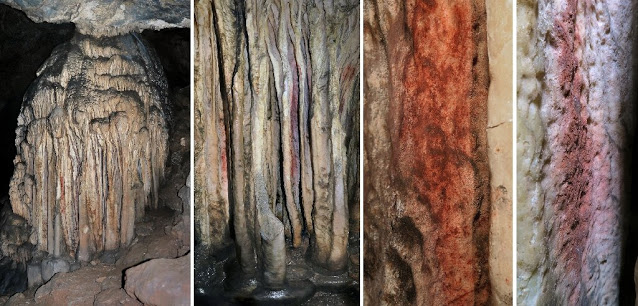According to research published on Monday, Neanderthals, long thought to be unsophisticated and brutish, did indeed paint stalagmites in a Spanish cave more than 60,000 years ago.
Since the publication of a 2018 research attributing red ocher pigment found on the stalagmitic dome of Cueva de Ardales to our extinct “cousin” species, the subject has made paleoarchaeology shocked.
The painting was created at least 64,800 years ago, when modern people did not exist on the continent, according to the dating.
However, this finding is controversial. According to Francesco d’Errico, co-author of a new paper in the journal PNAS, “a scientific publication indicated that perhaps these colors were a natural phenomenon,” a result of iron oxide flow.

Furthermore, their texture did not match natural cave samples, implying that the colors came from somewhere else.
The pigments were applied at different times, more than 10,000 years, according to more thorough dating.
This “reinforces the hypothesis that the Neanderthals came to mark the cave with pigments on multiple occasions over thousands of years,” said d’Errico of the University of Bordeaux.
It’s difficult to compare Neanderthal “art” to prehistoric contemporary human wall paintings, such as those discovered in France’s Chauvet-Pont d’Arc cave, which are more than 30,000 years old.
The discovery, however, increases the evidence that Neanderthals, whose lineage went extinct some 40,000 years ago, were not the obnoxious ancestors of Homo sapiens that they had long been depicted to be.
The pigments are not “art” in the traditional sense, but rather “the result of graphic behaviors to sustain the symbolic meaning of a space,” according to the team.
The cave structures “played a significant role in the symbolic systems of some Neanderthal groups,” according to the study, although the meaning of those symbols is still unknown.






















